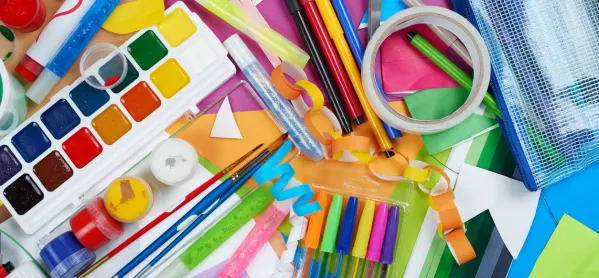We all know the story of the Emperor’s New Clothes: how an overconfident king convinced himself that his new robes were the finest in the land, when in fact they did little to hide his modesty and everything to display his hubris.
I see a parallel here between the robes in this old Hans Christian Anderson tale and the explosion of colour that we see across every classroom wall in the country.
There are plenty of teachers who love to dress up their display boards in all their finery; if it can be laminated, staple-gunned or bubble-written, it’s going on the wall.
But, wait. Could we all be being duped by displays, just like the emperor in the story was duped? Are the displays really as worthwhile as we think they are?
Robert Coe, a professor of education at Durham University, has talked about “poor proxies for learning”: those things that can make it seem like a classroom is ticking over nicely - engagement, busyness, and hands shooting up - when in fact there isn’t much in the way of learning occurring.
I’d like to add a lovingly-maintained display board to this list.
What’s wrong with displays?
Yes, you can hang a rucksack on the display board, but it doesn’t mean the class will know how to solve word problems. You can create a 3D model of the Titanic out of cardboard boxes and loo rolls, but it doesn’t mean the class will be able to explain why the ship went down. You can double-back the board and edge it in three different colours, but it doesn’t make the work stuck there any better.
Can a good display aid learning? Of course - if that weren’t the case then most museums would be shutting their doors. So, that’s not really the question. Instead, we should be considering two things when it comes to displays: how much does my display help learning and who is it really for?
Let’s deal with the first of those questions first. It’s so easy to find things to put on the walls; a quick Google search will put every phonics chart, number line and definition of an adverbial clause at your fingertips. But just because you can, doesn’t mean you should.
My heart sinks a little bit at the start of every new school year when I see social media become flooded with teachers (particularly NQTs) talking about the hours they have spent “setting up their classroom” in the summer holidays. The sad truth is that, for the most part, those hours are wasted. If it was already on the wall when the kids walked in, then it’s wallpaper. I’m a big believer in bare-board September; that the information or exemplar work that goes on display is drip-fed throughout the year so each new piece has impact.
Who are displays for?
And this brings us to the second question. Who are these boards really for: children or visitors? In these days of Pinterest, it’s easy to find examples of truly creative and elaborate classroom displays. It’s so easy that even members of your school’s leadership team can do it.
Everybody wants their school to look nice; nobody is advocating teaching children in utilitarian breeze-block cells. But it’s easy for SLT’s praise of a display to snowball into a peacocking arms race. If a school wants its corridors and classrooms lined with displays that look like they’ve fallen off the ceiling of the Sistine Chapel that’s fine, but it needs to be realistic about what that costs in terms of time, resources and opportunity loss.
All too often, teachers are at school late into the night, dressed only in their B Eds and PGCEs, creating displays that show you everything, but teach you nothing.
Ian Goldsworthy is a primary teacher and tweets @Ian_Goldsworthy




